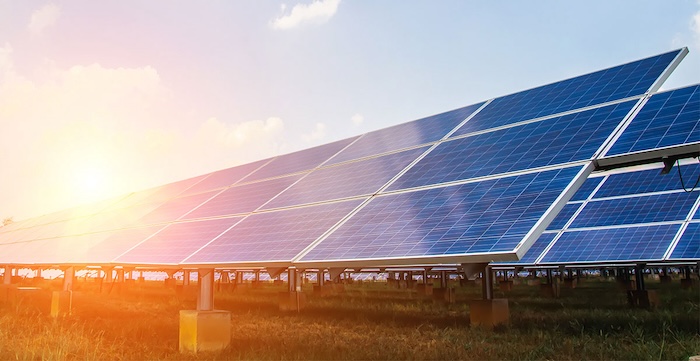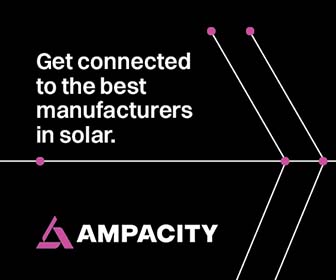3 Challenges Facing Community Solar’s Exponential Growth
Community solar is on a hot streak. The industry is expected to hit 14GW in existing U.S. markets by 2028, with a projected 8 percent average annual growth, at least one community solar project now exists in 41 states and D.C., and at least 19 states and D.C. have officially affirmed the value of these projects through enacted policies and programs.
But this level of growth is not without its challenges. Community solar as an industry has three key concerns that developers, owner-operators, and other stakeholders must address in order to see continued portfolio expansion as well as return on investment. These include:
While the growth of community solar is exciting for developers who want to get into this space, there’s a significant hurdle to overcome: the more demand there is for community solar, the more developers have to actually supply that demand.
Community solar is attractive to developers, independent power producers (IPPs), and commercial real estate owners because of incentives from the Inflation Reduction Act, but it’s also attractive to homeowners and corporations who want to take advantage of the affordable energy rates generated by such projects. This creates a dual-sided demand for community solar.
Since interest in this solar solution isn’t going away anytime soon, energy providers will need to determine how they can balance their enticing services with the reality of their delivery capacity, as well as the best way to present this information to off-takers (residents, income-qualified people, and commercial subscribers).

For example, community solar providers might need to look outside of programmatic requirements, consider more onsite installations, or provide virtual power purchase agreements (PPAs). They also need to take into account when power can actually be delivered due to an often-delayed interconnection queue.
Ultimately, energy providers will have to figure out exactly what they can give subscribers (and when) to meet their energy needs, and then explain this in clear terms so there’s no confusion or disappointment in delivery. In theory, as the community solar industry grows, energy providers will have an easier time with supplying enough power to meet demand.
2. Long-Term Operating Expenses
More often than not, community solar developers know what their capital expenses are going into a project’s development. They don’t, however, always have the most accurate data to forecast appropriately for ongoing operating expenses (OpEx).
Solar assets are a long-term investment that can last 25+ years. But both corrective and preventative maintenance have to be factored into operating costs, along with other aspects that might affect financial models: QA/QC visits, monitoring software, prevailing wage increases, etc. Large ground-mount projects will also need landscaping/vegetation management, and panels have to be routinely washed.
Underestimating for OpEx can be detrimental to numerous parties. Because community solar is one of the fastest growing clean energy segments, anyone involved in a community solar asset – from developers to IPPs to commercial real estate owners – stands to lose if that asset doesn’t perform as expected.
Fortunately, community solar developers can budget for operating expenses, not only through a robust understanding of what needs to be included in their post-install OpEx, but also by focusing on optimal asset performance. This will help reduce system downtime, while avoiding expenses like unnecessary truck rolls.
Focusing on asset performance can be accomplished through partnerships with companies that specialize in solar performance assurance and management. As community solar assets continue to perform optimally, every involved party will realize the full benefit of the investment.
One of the biggest challenges facing community solar is the same facing all of the solar industry, and that is the reality of a shortage of operations and maintenance (O&M) technicians. This problem will only get bigger as community solar expands without sufficiently trained technicians to go around.

Developers, IPPs, and commercial real estate owners will all want to hire experienced installers and electricians from adjacent trades, but the truth is, there's not enough of them. Solar experts are well aware of this shortage, as it’s often at the top of the collective industry’s mind. Industry events like AMNA and RE+ often have entire panel discussions dedicated to hiring enough trained and experienced technicians, because fixing the O&M technician shortage – as well as standardizing the definitions, qualifications, and skills of a solar technician – is a goal shared by the entire industry.
What’s the best solution to fixing the O&M technician shortage? Invest in training, awareness, and standardization of technician roles. Community solar developers can do this by supporting organizations who are dedicated to defining, nurturing, and training these O&M roles, or by actively championing initiatives that drive awareness of solar O&M technician job opportunities to the general public.
These three challenges in community solar won’t be solved overnight. But as awareness of them grows and solutions are advanced, the more likely developers, off-takers, and the solar industry as a whole will benefit from the upward momentum of community solar development.
Trish Graf is Vice President, Enterprise Sales at Omnidian, an asset performance management and nationwide service provider for commercial and residential solar and storage assets, whose mission is to protect and accelerate investments in clean energy technology.
Omnidian | omnidian.com
Author: Trish Graf
Volume: 2024 July/August











.png?r=1084)
